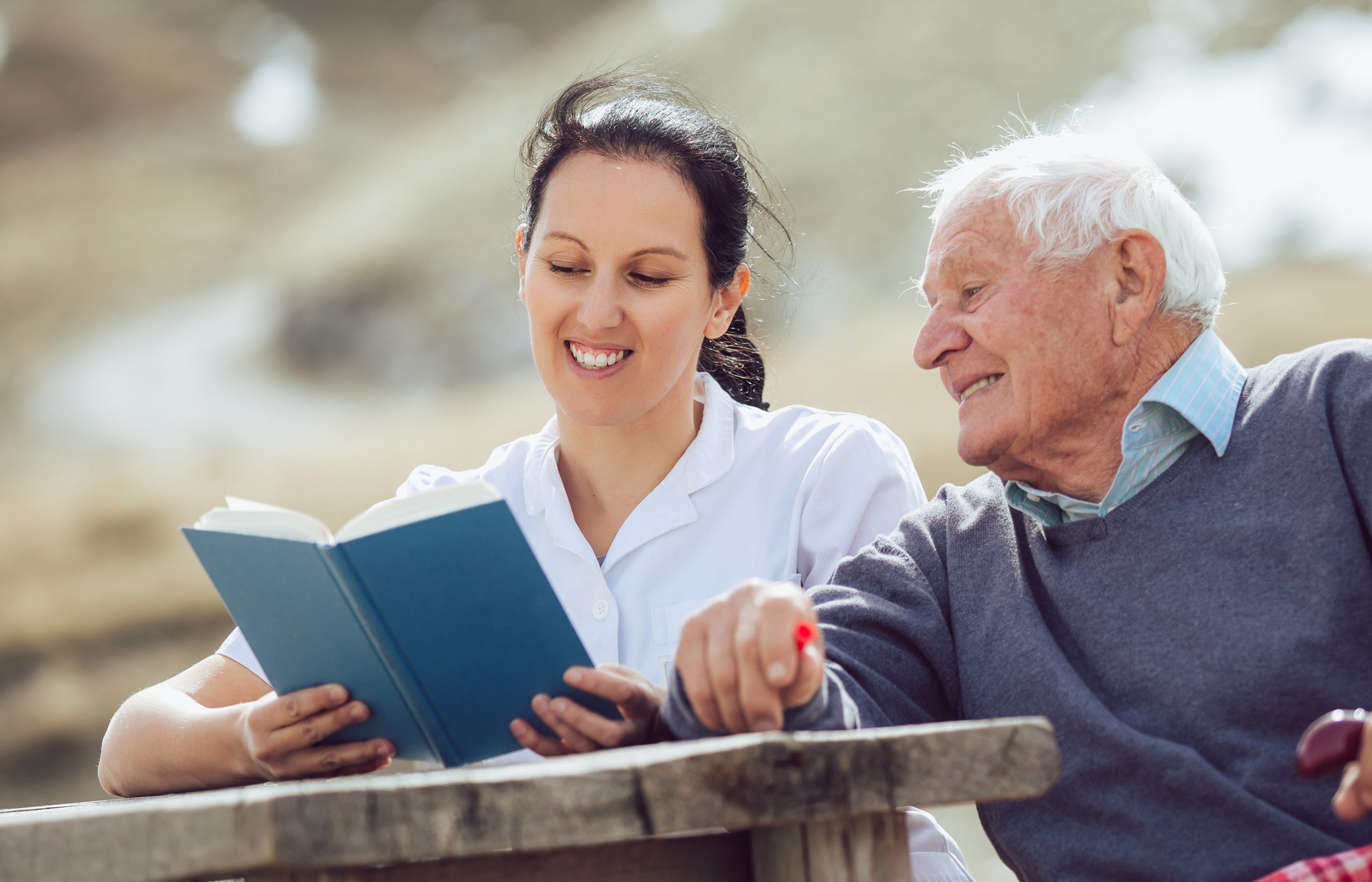Complementary Therapies for Lung Cancer Patients
Complementary treatments can be used in combination with standard lung cancer treatments. Learn about the different types of therapies available to lung cancer patients.

What Are Complementary Lung Cancer Treatments and Therapies?
Also known as complementary and alternative medicine (CAM), this form of lung cancer treatment is meant to be used in combination with standard therapies like chemotherapy, radiation, surgery, or targeted therapy. Sometimes (only under doctor recommendation) they’re used to replace standard treatments. Complementary treatments generally consist of 3 forms of focus:
- Supplemental, natural health
- Physical interventions
- Mental/emotional/physical support
More than half of adults diagnosed with cancer worldwide utilize some form of CAM. Complementary therapies may improve a patient’s prognosis by reducing pain, anxiety, or other side effects associated with lung cancer or its subsequent treatments. Patients should never stop primary treatments before having a talk with their doctor about it.
Clinical Trials Treatment
Many CAMs are developed and tested in clinical trials. A clinical trial is a study made on volunteers by doctors, scientists, and researchers, to develop new medications or treatments. This is a great opportunity for lung cancer patients to have new and emerging treatments that aren’t available anywhere else. Additionally, volunteers are aiding in the study of new medical therapies. Make sure to find reputable clinical trials that are run by a reliable and trustworthy organization. Your doctor will recommend you to some helpful resources for this if they determine a clinical trial may be helpful for you.
Why Use Alternative Treatments?
Sometimes a patient may be too unhealthy for primary forms of treatment. Complementary therapies offer an additional option. Additionally, they help reduce symptoms and negative effects associated with lung cancer. CAMs can also help improve the quality of life of some patients. Your doctor may choose to utilize integrative, or alternative complementary treatments.

Integrative Medicine
This type of treatment combines complementary and primary lung cancer treatments. Make sure you stick strictly with the treatment plan your doctor gives you and don’t deviate because certain medicines don’t mix well with others. Be thorough with your doctor about all the medications you’ve taken, are currently on, or are going to take.

Alternative Therapy
Most people who utilize complementary treatments take the integrative medicine approach instead of the alternative.
As the name suggests, alternative therapy for lung cancer may replace primary methods if they don’t prove to be working well, or if you’re not healthy enough for them. However, this should only be done under the recommendation and supervision of your primary physician. Don’t ever stop or lessen standard medicines unless advised by your oncologist.
Ancient Techniques
These complementary therapy subsections involve techniques from different places around the world and apply comprehensive methods that involve many regions in the body working together.

Ayurvedic Medicine
This complementary treatment is an ancient Indian system that is over 5,000 years old. It encompasses a variety of techniques that involve special diets and bowel cleansing, ayurvedic medications, herbal medicines like mushrooms, massage, meditation, yoga, and other breathing and relaxation approaches.

Traditional Chinese Medicine
Also known as TCM, traditional Chinese medicine was produced from Chinese philosophy. Its primary function is to boost health by focusing on harmonizing imbalance in the body. Studies have shown that TCM has reduced some side effects of chemotherapy and radiation and increased survival time in some patients.
Specific Types of Complementary Treatments
Derived from western medicine, China, Japan, India, Thailand, and more, the following therapies have proved helpful in some patients in their fight against cancer.

Biology Focused
What you ingest into your body is important and has a direct effect on a person’s overall health and their body’s ability to fight disease. Taking the right supplements with a well-rounded diet can go a long way. While no dietary supplement fully treats, cures, or prevents lung cancer, some potentially assist the body in recovery or counter tumor growth.
- Vitamins – When used appropriately, some vitamins may help boost immune, muscle, and/or, nervous system function. Others can act as antioxidants that help cleanse the body of cell-damaging free radicals. Some vitamins that have been associated with helping the body against tumors are Vitamin D and Vitamin E.
- Herbs – Herbs that have been associated with aiding the body’s defense include garlic, ginger, ground flaxseed, green tea, and turmeric. These could also help with slowing tumor growth, as an anti-inflammatory, anti-nausea, antibacterial, and antioxidant ability among other benefits.
- Diet – Avoiding certain things like red, baked, and processed meats, fried, grilled, and preserved foods while incorporating more whole grains, fruits, and vegetables has been known to help improve a person’s health significantly. Cutting back on salt, sugar, and oily foods is also beneficial.

Biofield Therapies
Biofield therapies focus on the energy inside of and surrounding the body, the primary goal being to manipulate that energy for healing. There’s been evidence suggesting a positive impact of biofield therapies in helping patients in coping with the diagnosis, treatment, and recovery process of cancer.
The human body has a subtle energy system that can breach the physical anatomy and extend outward. Disease and disorder are also found in this energy system, and with the application of conscious healing, intent, and compassion, a patient could improve their energy and outlook, subsequently aiding their body in its fight against the disease. Recipients of these treatments have reported increased relaxation, reduction in pain and anxiety, as well as an increased sense of wellness.
- Reiki – Also known as “spiritually directed life energy” reiki is a hands-on healing tradition that focuses on the spiritual aspect. Reiki originated in Japan and was rediscovered in the late 1800s. In this method, the practitioner may also receive benefits from the universal life energy that flows to and from the recipient. Instead of attempting to manipulate or balance energy, reiki focuses more on the flow of the universal life energy to the recipient, who then may utilize it when and how needed. Recipients have reported deep relaxation, a reduction in anxiety and pain, and a boost in their sense of well-being after multiple sessions.
- Healing Touch – A process that utilizes soft touches administered by the practitioner to the patient to aid in the balance of mental, emotional, spiritual, and physical well-being. This works by supporting the patient in their natural ability to heal. Practitioners will use intention when passing the energy through their hands to influence the recipient’s energy system, potentially facilitating the healing process.
- Therapeutic Touch – This method involves the integration of several ancient healing practices as interpreted by the practitioner. Therapeutic touch as opposed to the name actually involves a noncontact intervention where the practitioner passes energy through the patient’s energy field through their hands without touching them. The primary goal of therapeutic touch therapy is to streamline feelings of relaxation and well-being to restore balance through the mobilization of the patient’s own healing energies. This may aid patients by relieving stress and supporting immune function. There are 5 steps involved:
- Centering the present moment
- Assessing the energy field by holding hands
- Mobilization of the energy field
- Balancing/rebalancing through direct energy set with intent towards healing
- Evaluation and final assessment

- Mind and Body – These types of complementary treatments focus on interweaving methods that affect both the mind and body at the same time.
- Meditation – An ancient practice that is part of many spiritual traditions, meditation aims to get the patient into a state of extreme relaxation where they also remain alert and focused. Methods vary, but the core features remain intact. These include focused attention and composed yet regulated breathing. The goal is to gain the ability to manage thoughts and feelings that come to mind when in this state, acknowledge, and release them. Studies have shown that some patients who master meditation techniques have reduced anxiety and depression levels. Sleep patterns have also been shown to improve. Meditation may also reduce disturbances in emotional and physical stress, further helping a patient fight off disease and manage treatments.
- Biofeedback – Also known as biofeedback-meditated stress management (BFSM), the primary goal of this complimentary treatment is to help patients control their body’s reactions in stressful situations. Reactions could include increased heart rate, and raised muscle tension among others. The focus here is to help patients reach a deep relaxation that helps increase health in their bodies and minds. Some studies on patients have shown meditation to be successful in reducing the side effects that come with chemotherapy and radiation.
- Yoga – There are Indian-based yoga and Tibetan yoga, which are similar practices in that they both help patients combine physical movements, breathing techniques, and meditation to boost mind and body health. Studies have shown cancer patients who attended yoga groups showed lower levels of inflammation, improved sleep, and physical function.
- Tai Chi/ Qigong – Grouped with the yoga family, tai chi/qigong is a part of traditional Chinese Medicine and originated as a martial art. Recently lung cancer patients have been utilizing this complementary therapy after a monumental study was released that suggested therapeutic benefits in fibromyalgia patients who practiced tai chi. Other studies suggested that tai chi or qigong have helped reduce inflammation, humoral and cellular immunity dysregulation, fatigue, and distress. Increases in aerobic and circulatory capacity have also been shown in some patients.

- Physical – Physical touch can be very helpful. Therapeutic massage has been known to reduce lung cancer symptoms, help with coping, and enhance the quality of life.
- Massage – There are many forms of massage, common types include Swedish and Thai massage. Thai massage is an ancient bodywork system meant to help unblock pent-up energy and improve vitality. This is done by applying pressure throughout the meridians (channels) throughout the body. Swedish massage involves systematic strokes, kneading, and stretching various parts of the body which help to loosen muscles and reduce stress.
- Acupressure – An ancient Asian healing technique that applies fingers on the surface of the skin to stimulate key points that balance energy flow through chakras and meridians. This manipulation is believed to help stimulate the immune system and encourage healing.
- Reflexology – Like massage, reflexology also consists of firm pressure applied to the body. Reflexology, however, is more specifically directed to points on the feet, hands, and ears. This is based on the proposition that these spots are linked to every other area.
Things to Consider With Complementary Treatments
Be careful when selecting which CAM techniques you want to utilize, and always run it by your oncologist. Some make claims not backed by science and can cause harm instead of healing. Others may have adverse reactions to the current medications you may be taking. Avoid treatments that:
- Claim to completely cure cancer
- Advise you to avoid primary therapies
- Aren’t well-known
- Your doctor advises against
Tell practitioners working with and administering alternative treatments to work with your primary doctor on your treatment plan. This is a simple request that all should agree on, try to avoid those who refuse.
Talk to Your Doctor
Complementary and alternative treatments are not meant to replace primary therapies, only to supplement them. Only under specific circumstances highlighted by your oncologist can alternative medicines replace standard prescriptions.
Talk to your doctor if you’re interested in joining a clinical trial or otherwise want to test out alternative therapies. They’ll be able to recommend the best options for you, ensure complementary therapies don’t interfere with other treatments, and can give you a better idea of what to expect post-treatment


